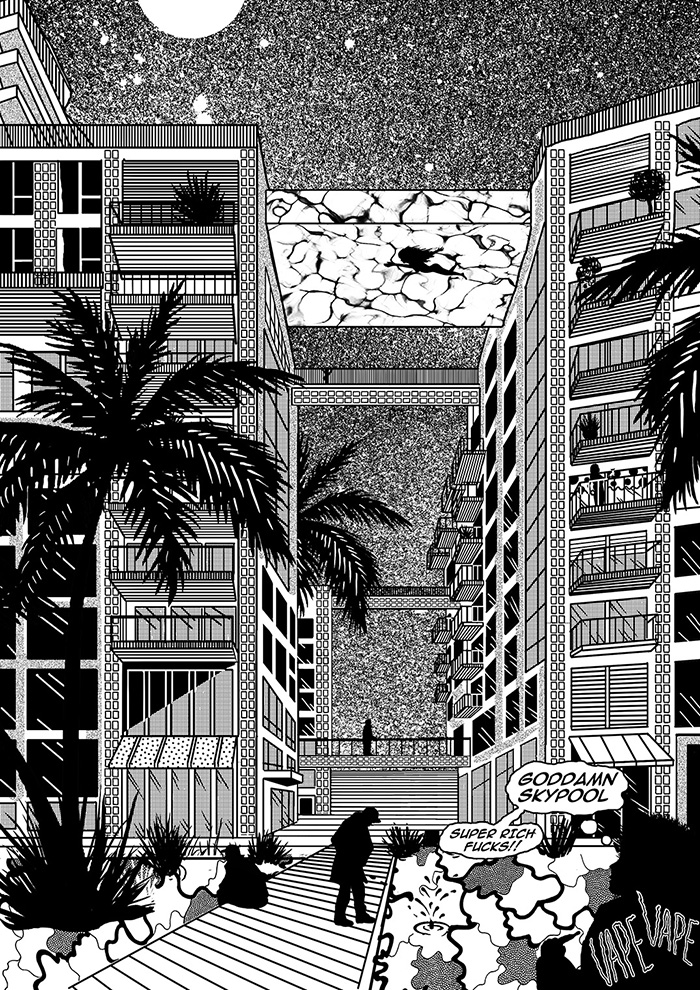Varoom 38: Contested Space
Contested Space
Luxury property development is a lucrative industry, generating huge profits for investors and shareholders. Cities across the UK are seeing the construction of high-cost homes proliferating against a background of social and affordable housing shortage and the displacement of communities from newly ‘aspirational’ locations.
As they transform urban sites, developers are employing strategies to engage with their existing surroundings. Increasingly, working with artists is one of them.
Do collaborations with property developers offer valuable and mutually beneficial opportunities to creatives and communities? Or do they simply artwash actions that ultimately undermine the diversity of cities? We asked Emily Jost, founder member of Artists Against Social Cleansing and Ian Whadcock, Senior Lecturer in Illustration with Animation at Manchester School of Art, and these are extracts from their responses from the Activism issue of Varoom.

From Black Matter by Cat Sims set in a near future when gated luxury flats have left behind a decaying and broken dystopia for everyone else.
Emily Jost
Gentrification has always been aided by the creative sector – wittingly or unwittingly – and developers are wise to this, often working with artists and arts organisations to speed it along while distracting from their profiteering. At the same time, the arts have been hit by cuts and competition for diminishing funds has led many to see working with developers as a means of survival, almost as if such commissions are philanthropic rather than parasitic.
While hoarding applications are the most common manifestation of these collaborations, developer-led artwashing takes many other forms including commissioned murals, installations, participatory events and even the supply of studio space. It’s a slippery and confusing landscape requiring scrutiny, and for examples of good and bad practice to be shared more widely.
Real socially engaged practice can mean using creativity to fight against processes that hurt communities, and supporting community activists to use their own art to defend their right to exist in cities.

Bradford Pit Project, Jacob Phillips, Manchester School of Art
Ian Whadcock
At one level the requirement of a developer client may be ‘decoration’ to cast a positive light on a controversial site, however it is within the remit of the artist to demonstrate that they can still fulfil this brief whilst creating work which has a deeper relationship with a place over time. For illustrators and animators in particular this can mean an opportunity to tell stories, to reveal layers of history and to shine a light into that which is often discarded or unrecognised as being of social or archival value.
Illustrators can take advantage of opportunities to make interventions into the physical fabric of buildings, to explore application to materials, structures and surfaces including multi-media approaches. They reconnect both client and users with the previous narratives of a space, embedding past into the present through application of ideas to the traditional forms of publication and exhibition.
To read more on Contested Spaces purchase Varoom 38 here
Back to News Page
